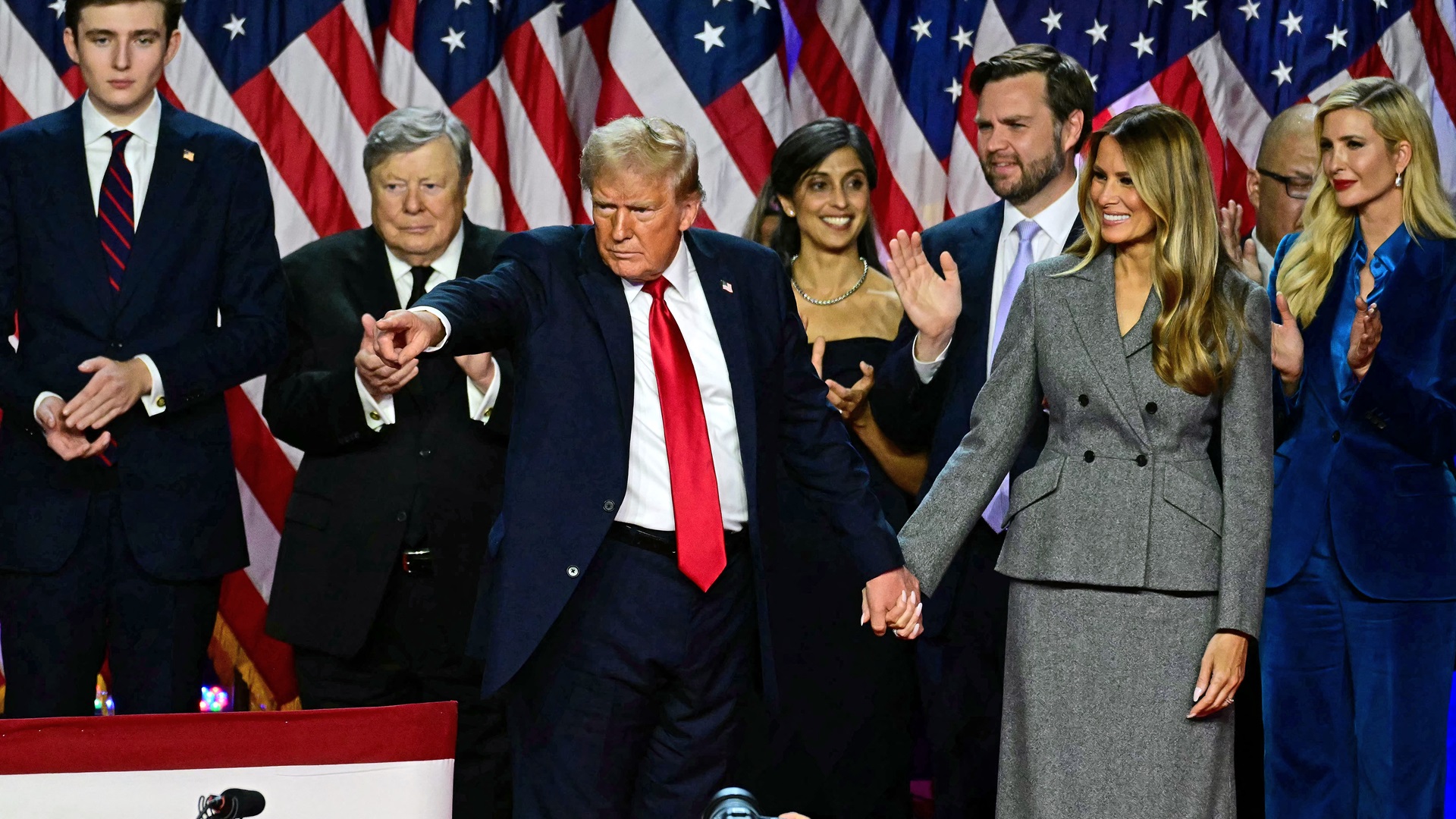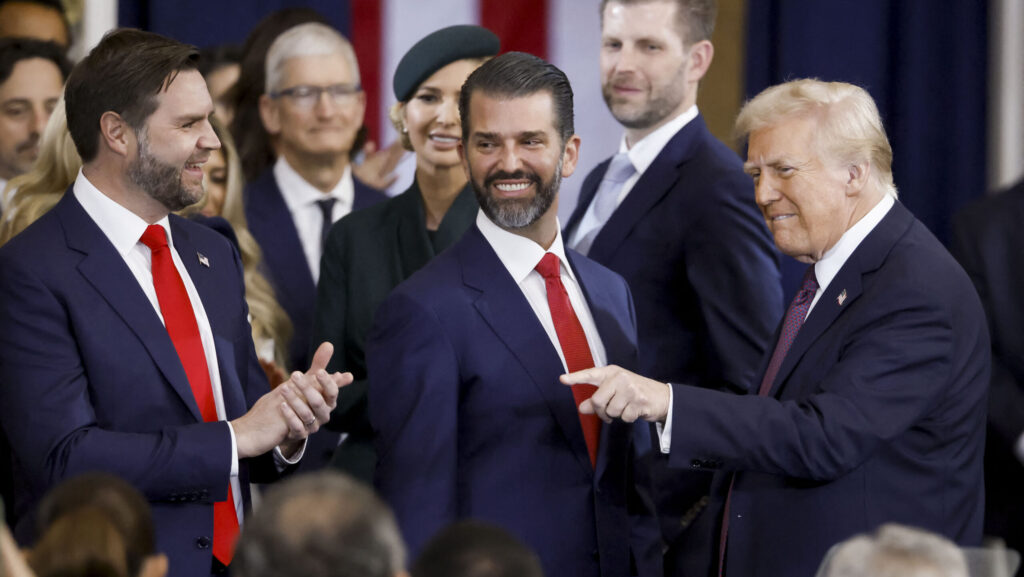The 60th quadrennial presidential election in the United States was held eight weeks ago. As the new administration is getting ready to take office, let’s take a look at this very election we have been focusing on all year, the election of 2024, which made Donald Trump the second President in US history to win a non-consecutive term.
The shock in Washington, D.C. caused by Donald Trump’s unforeseen victory in 2016 died down fairly quickly. Since President Trump took both houses of Congress with him, Democrat operatives had to get ‘creative’ in trying to sabotage his agenda. An investigation, headed by Special Counsel and former FBI director Robert Mueller, was launched to determine if he was colluding with the Russian government to win the election. Only later had it been found out that the first warrants of the investigation were granted based on the Steele dossier, a piece of false opposition research ordered and paid for by the Hillary Clinton campaign and created by British intelligence officer Christopher Steele.
After over two years of inquiry, the Mueller report could not reach a definite conclusion on the matter of ‘Russian collusion’—however, it did make sure that negative stories of the Trump administration could always make the news.
In the meantime, President Trump delivered historic tax cuts for the American people, with the passing and signing of the Tax Cuts and Jobs Act. It reduced the federal income tax from 39.6 per cent to 37 per cent in the highest tax bracket, and from 15 per cent to 12 per cent in the second lowest tax bracket, while keeping the lowest tax bracket at 10 per cent. It also reduced the corporate tax rate from 39 per cent to 20 per cent.
While Republicans did poorly in the House in the 2018 midterms, they did gain two Senate seats. By the end of 2019, the American economy was doing really well with decreasing unemployment and great stock market growth. Accordingly, the American people gave President Trump high marks on the economy.
In December 2019, Donald Trump became the third President in US history to be impeached by the House of Representatives, for allegedly trying to solicit damaging information about Former Vice President and probable 2020 Democrat presidential candidate Joe Biden from President Volodymyr Zelenskyy of Ukraine. However, just like Andrew Johnson and Bill Clinton before him, he was acquitted by the Senate.
Despite all that, by the time the election year of 2020 came around, President Trump was regarded to be well-positioned to be re-elected. However, the outbreak of the COVID-19 pandemic changed everything.
The virus originated in China, and caused a major pandemic in Europe before it started infecting people en masse in the United States as well. In the Ides of March 2020, President Trump ordered a nationwide lockdown to stop the spread. Businesses were forbidden from opening to customers, and people were forced to stay home except for essential errands.
Evidently, this devastated the economy. All the Trump-era gains were wiped out of the stock market; and President Trump was forced to sign multi-trillion (!) dollar stimulus packages to keep the American economy afloat. It was effective in making the major stock indexes rise again, and many Americans were also happy to receive personal stimulus checks with President Trump’s name on them. However, American businesses were still uneasy about the lockdowns, especially as the number of daily recorded cases of COVID kept rising as the year went along. President Trump was urging for a reopening, citing economic damage, but many governors—mainly Democrats—did not heed his requests.
In the meantime, in May 2020 in Minneapolis, Minnesota, a police officer named Derek Chauvin killed a black man named George Floyd while detaining him after pressing down on his neck with his knee for a prolonged period of time. This sparked a wave of violent riots across major cities in the United States; and made the Black Lives Matter movement, which claims that minority people in America are still being systematically oppressed, nationally prominent again. Chauvin was eventually found guilty of second-degree murder in April 2021.
So, all in all, by the time the 2020 presidential election came around, President Trump and the country were not in great shape.
Despite all that, the results were surprisingly close. The polls significantly underestimated Trump again, and he ended up losing the popular vote by just 4.5 points to former Vice President Joe Biden. In the swing states, the races were so close that it actually took five days to call the election. President-elect Biden did not get to give his victory speech until Saturday evening. The final electoral vote tally on the books was 306–232 to Biden.
Because of the pandemic, the number of mail-in ballots was enormous—65.6 million, to be exact, evidently a record number. Because most states counted their mail-in vote after their in-person vote, President Trump held sizable leads in all the swing states even at the end of election day. That, and reports of many suspicious activities with the vote counting process, made President Trump believe that he was being robbed of the presidency through wide-scale voter fraud.
On 6 January 2021, he spoke at a massive protest against the alleged fraud in front of the Capitol building in Washington DC as the new Congress prepared to certify the 2020 presidential election results. Many of the people in attendance ended up breaching the Capitol, and caused some property damage. The incident led to a big drop in President Trump’s approval rating and some in the administration to resign, so President Trump ended up giving up his objections and committed to a peaceful transfer of power. However, he never conceded the election, and maintains that he was cheated out of victory to this day.
President Biden’s term seemed to be off to a flying start. Only days after the election was finally called, the American pharmaceutical giant Pfizer announced that it had developed an effective vaccine against the COVID-19 virus. They were working under President Trump’s ‘Operation Warp Speed’ initiative for a quick development of the vaccine.
By January 2021, the vaccines started to be distributed among the American public. In the spring, the daily infection numbers dropped significantly, the stock market was rising again, and President Trump was even suspended from all major social media sites—it seemed everything was going the Democrats' way.
However, in the meantime, inflation also started to rise. In addition, the disastrous withdrawal of American troops from Afghanistan delivered the first major blow to President Biden’s approval numbers. And, in an unexpected twist, COVID infections climbed to a record high in the winter of 2021–2022, despite the mass vaccinations, even reaching one million per day (!). Americans also grew increasingly tired of the pandemic restrictions.
To make matters even worse, President Vladimir Putin of Russia ordered Russian forces to enter Ukraine, into territories he declared ‘independent'. Thus, the Russo–Ukrainian war broke out. The average gas price rose to over $5 per gallon for the first time ever in the US in the summer of 2022. Inflation hit nine per cent, to which the Federal Reserve responded by aggressively raising interest rates, which made mortgages and business loans very expensive for Americans. The stock market, in turn, started to tank.
2022 seemed to go disastrous for the Democrats. Yet they held their own in the midterms, only losing the generic ballot vote in the House by 2.8 points, limiting the GOP to a narrow majority, while also gaining a Senate and two governor’s seats.
This prompted the calls to have Joe Biden, who also had to deal with scrutiny about his old age and diminishing mental acuity, be replaced on top of the ticket for the 2024 election to subside; and some Republicans to blame the underwhelming performance on Trump.
Soon after, Donald Trump had more serious issues to worry about. He was indicted in four different cases on 94 felony counts combined in 2023, becoming the first POTUS in history to face criminal prosecution. His cases had to do with his involvement in the January 2021 Capitol riots, alleged mishandling of classified documents after leaving office, his push to investigate potential voter fraud in Georgia, and hush money payments to porn star Stormy Daniels during the 2016 campaign.
However, by the end of 2023, Donald Trump had also overtaken incumbent Joe Biden in the national polling aggregates; and President Biden’s approval dipped back to historic lows for a first-term President. In addition, Robert F Kennedy Jr, son of former Attorney General Robert Kennedy and nephew of former President John F Kennedy, who was Biden’s biggest challenger in the primaries, announced he was launching an independent presidential campaign.
With the economy somewhat rebounding, the migration crisis became a big reason behind President Biden’s unpopularity. The system under his watch allowed ‘asylum seekers’ to freely roam the United States after they submitted an application, whether it got accepted or not. Deportations were way down, illegal crossings were way up, and, to make matters worse, the Biden administration was actively suing states who tried to secure the border on their own ‘dime’. Homeland Security Secretary Alejandro Mayorkas became the first cabinet member to be impeached by the House since 1876, for his inaction and negligence on border security. However, the Democrat-majority Senate refused to even hold a trial.
In May 2024, the first of President Trump’s criminal cases reached a conclusion: he became the first POTUS in history to be convicted in criminal court, after a Manhattan jury found him guilty of ‘falsifying business records,’ for labelling the hush money payment to Daniels as attorney’s fees. However, this historic development still did not move the needle with American voters (if anything, it only helped his fundraising efforts), and President Trump remained in the lead nationally.
'President Biden became the second President in US history not to seek re-election despite being eligible according to the 22nd Amendment after Lyndon B Johnson in 1968'
What did move the proverbial needle, however, was the first presidential debate. It was held at an unusual time, at the end of June; and President Biden’s awful performance reignited calls for him to step down. President Biden was incoherent for most of the time on the debate stage, in addition to looking pale and brittle. Voters had expressed scepticism about his ability to serve another four-year term due to his old age (he would have been 82 at its start), and those concerns were all but confirmed.
Eventually, despite voicing opposite intentions, President Biden dropped out of the race in late July, becoming the second President in US history not to seek reelection despite being eligible according to the 22nd Amendment after Lyndon B Johnson in 1968. Just like with Johnson, it was his Vice President who took his place at the top of the ticket.
Kamala Harris became the presumptive nominee after Biden’s endorsement, and she was confirmed as the party’s candidate at the DNC in Chicago, Illinois in August. Harris was the first female and first minority Vice President in US history. She chose Minnesota Governor Tim Walz as her running mate.
Amidst all that, as a testament to what an unprecedented and crazy election cycle this was, President Trump survived an assassination attempt. On 13 July, he was speaking at a campaign rally in Butler, Pennsylvania, when 20-year-old gunman Thomas Matthew Crooks took a shot at him with his rifle from the roof of a nearby building, and grazed his ear. One attendee was sadly shot to death. Secret Service returned fire and killed the assassin.
At the Republican National Convention, held in Milwaukee, Wisconsin only days after the assassination attempt, President Trump chose Junior Senator JD Vance from Ohio as his Vice President.
After Vice President Harris entered the race, there was a sudden movement in polling towards the Democrats, both nationally and in swing states. However, some suspected that it was not genuine, and it was just the mainstream media trying to help the Democratic Party again. After all, President Biden's approval remained low. Inflation was not going dow fast enough to allow the Fed to cut interest rates significantly; and the illegal migration crisis remained a top issue with voters as well. The Chair of the Harris campaign even admitted once that their internal polling numbers were a lot worse than the public polling data. RFK Jr also decided to help out Team Trump: he dropped out of the race and endorsed the former POTUS.
In the end, Donald Trump won. He became the 45th and 47th President of the United States, only the second POTUS to be elected to a non-consecutive second term after Grover Cleveland. He received 49.8 per cent of the popular vote, against Kamala Harris' 48.3 per cent. His 1.5-point popular vote victory was the first for the Republican Party in a presidential election since 2004. The electoral vote tally was 312–226 for Trump, completing his great comeback to the White House.
Related articles:







